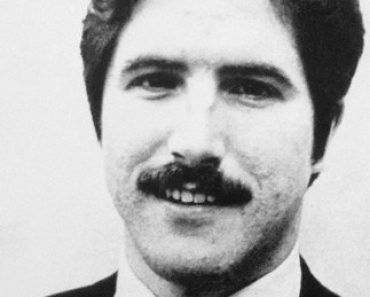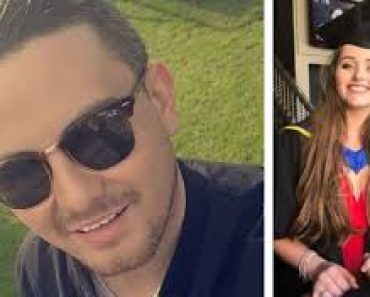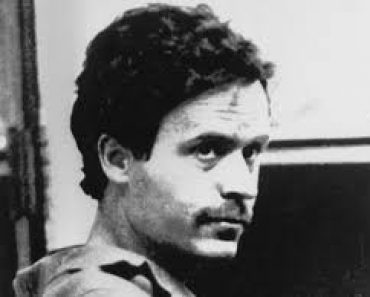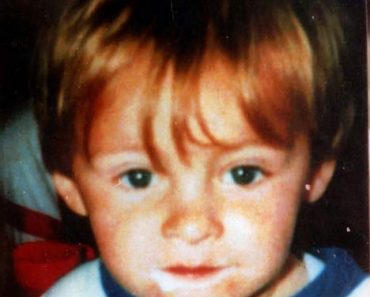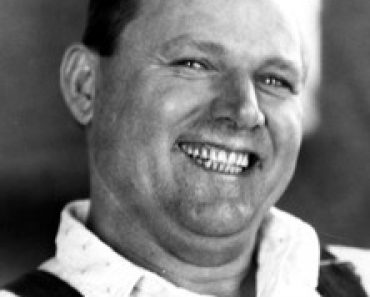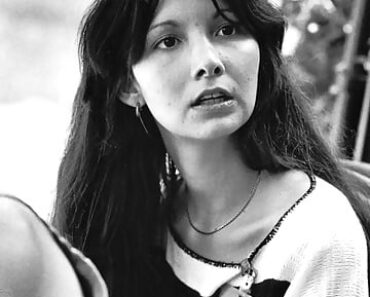

The Kauhajoki School Shooting was a school shooting that occurred on September 23, 2008, at Seinäjoki University of Applied Sciences in Kauhajoki, a city in Western Finland.
The gunman, 22-year-old culinary arts student Matti Saari, shot and fatally injured ten people with a semi-automatic pistol, before shooting himself in the head. He died a few hours later in Tampere University Hospital.
The shooting took place at the Kauhajoki School of Hospitality, owned by the Seinäjoki Municipal Federation of Education. The facilities and campus were shared between the Seinäjoki University of Applied Sciences and the Seinäjoki Vocational Education Centre – Sedu. Matti Saari was a second-year student in a Bachelor of Hospitality Management degree program.
The incident was the second school shooting in less than a year in Finland, the other being the Jokela school shooting in November 2007, in which nine people including the gunman were killed. Before that, only one other school shooting had taken place in the country’s history, in Rauma in 1989, leaving two people dead.
The Shooting
Matti Saari entered through the school buildings via the basement. The shooting began at around 10:40 a.m., when roughly 200 people were assembled inside the college. The emergency services received their first call at 10:46 a.m. Saari was armed with a .22 LR caliber Walther P22 Target semi-automatic firearm and home-made Molotov cocktails. He wore dark clothing and a ski mask. The school’s caretaker, Jukka Forsberg, who had several shots directed at him but survived, said “The gunman was very well prepared. He walked calmly.”
Matti Saari initially opened fire on a group of students taking a business studies exam, and entered at least one other classroom. According to the three students who were able to escape the exam room (there were roughly 20 students taking the exam), Saari had approached his victims individually before shooting them. It was also said that he was reveling in the situation and was acting very aggressively. Matti Saari encountered little resistance, and the massacre was concluded relatively quickly. He then covered the classroom in a flammable liquid, believed to be petrol, and set the room on fire.
A student in an adjacent classroom, Sanna Orpana, said that her class had heard “shooting and a kind of a rumble like tables falling down.” Orpana believed at the time that the noise may have been coming from a toy gun, and two other students went to investigate the noise. Saari shot at them, and the remaining students in Orpana’s classroom hid under a table before running upstairs. At some point between 10:45-11:00 a.m. Saari ran down a corridor and threw a petrol bomb into a language laboratory. He then shot out all of the windows in the school’s main corridor, that extended through the building. It was during this time that he also took aim at Forsberg.
Matti Saari
A police van with two officers arrived a short time after the shootings began, at around 11:00 a.m. They entered the yard of the college where they were shot at by Saari, and forced to retreat. From around 11:45 a.m. to 12:00 a.m. further police units, bolstered by a number of armored vehicles, began to arrive on the scene. They attempted to enter the building through the main corridor, but this assault was aborted due to the black smoke that was emanating from within the building.
Having escaped the buildings in a variety of ways (including through doors and out of windows), some students found themselves impeded by a river that adjoined the school. However, some were able to use rowing boats as a means of escape. Matti Saari started fires at several other locations within the school buildings, and the fire in the exam room damaged some of the bodies so badly that they had to be identified from DNA and dental records.
Nine of the victims were found in the exam room, and one in a nearby corridor. It was later ascertained that this student had fled the burning classroom and then died in the corridor. Eight of the victims were female students, one a male student, and one a male member of staff. All of the students killed were in their 20s, and the teacher was in his 50s. A 21-year-old woman was shot in the head but had two operations in the days after sustaining her injury, and was reported as being in a satisfactory condition. A further ten students were treated for minor injuries including sprains and cuts from broken glass. All the victims were classmates of Saari’s.
Matti Saari
Matti Saari was originally from Pohjois-Pohjanmaa, but lived in Kauhajoki where he was enrolled on his catering course at the college. It was later revealed that the male student was probably a close friend of Saari’s. The pair had spent an evening out together in February 2008 when they were threatened with starter pistol. A photo of them together had been circulating on the Internet, in which he jokingly points at his friend’s head with his forefinger. The names of the other victims were withheld by police.
Firefighters extinguished the fires without any major damage to the school. Matti Saari remained at large for some time in the school grounds after they had been evacuated. Two days after the killings, a friend of Saari’s, named Rauno, told 7 päivää that at 11:53 a.m. he received a call from Saari in which he confessed to having killed ten people. Saari is claimed to have spoken to Rauno in a calm manner, telling him that he wanted to say goodbye. He was found alive by the police at 12:30 a.m., having shot himself in the head. He was taken to Tampere University Hospital, where he was treated for his gunshot wound. He died a short time later.
With a total of ten people killed, it was the deadliest peacetime attack in Finnish history, surpassing the previous highest count of eight in the Jokela school shooting. It was the deadliest attack on a school campus since April 2007, when Seung-Hui Cho killed 32 people during the Virginia Tech massacre. Matti Saari had fired a total of nearly 200 shots, including towards the air. The highest number of shots inflicted to a single victim was twenty.
The Motive

Matti Saari left behind two handwritten notes in his school dormitory stating that his motive for the shooting was: “I hate the human race.” He also wrote: “The solution is Walther 22”, a reference to the handgun used in the shooting. The notes revealed that he had been planning the massacre for six years. A police spokesperson commented: “Matti Saari left notes saying he had a hatred for mankind, for the whole of the human race, and that he had been thinking about what he was going to do for years. The notes show he was very troubled and he hated everything.”
One former classmate, Susanna Keronen, stated: “He was happy, a social guy –– there was nothing exceptional – and he got along with people well and he was not lonely. He had friends.” However, Saari had a history of violence: he had been thrown out of the Finnish Army in 2006, after being a member for only a month, for opening fire in a woodland exercise, against orders.
Police were also investigating whether a copycat element was involved after it emerged that both Saari and Pekka-Eric Auvinen, the gunman in the Jokela school shooting, had bought their guns from the same store. Both gunmen had taken photographs of themselves in similar poses, and Jari Neulaniemi, the detective leading the Kauhajoki investigation, said that it was “very likely” that the two men had been in contact at some point. Both had been part of a group of people, who centred their activities around YouTube and Finnish social networking site IRC-Galleria, who were interested in school shootings. This community, which included members from Finland, Germany, and the United States, exchanged videos related to school shootings.
Police said that although most of the victims were female, the motive did not seem to be a hatred of women. Rauno stated in his interview that Matti Saari had opted for a catering course in order to be surrounded by female students. Saari had told Rauno that he had been the victim of bullying in secondary school, and later upper secondary, and that he had had to drop out for this reason. Rauno said that Saari’s behavior had begun to worry him over two years before the shootings, when Saari began expressing a fondness for guns and an admiration of the school shootings in the United States. He said that around 18 months previously Saari had sent him a message saying that he would carry out a school shooting the next day. Saari reportedly denied being serious about carrying out his threat. A friend of Saari also reported that he had been seeing a psychologist in the months before the shooting, and had been obsessed with guns.
Police said after their preliminary investigation, that they were unable to determine the underlying motives of Matti Saari. They added that he had committed his crimes alone: 200 people were interviewed during the investigation, none of whom said they knew of Saari’s plans. Contact with Auvinen was also ruled out.
Internet Videos and Photographs
In the weeks leading up to the incident, Matti Saari had posted several videos on YouTube under the username of “Wumpscut86”, showing him firing a handgun at a local shooting range. The YouTube user channel was accompanied by the quote “Whole life is war and whole life is pain. And you will fight alone in your personal war”. These are lyrics from the song “War” by the German industrial project :wumpscut:. Among the user’s YouTube account favorites was footage of the Columbine High School Massacre.
Matti Saarii listed his interests on YouTube as “horror movies, guns, sex, beer and computers.” YouTube suspended the account, on which he called himself “Mr. Saari”, as soon as news reports linking him to the shooting emerged. A spokesperson for YouTube commented that the site operated a zero tolerance policy towards threats and incitement to violence.
Finnish police had been informed about the YouTube videos in an anonymous tip-off on the Friday before the shooting. The police talked to Matti Saari and searched his home on the day before the incident, Monday 22 September. They found no reason to arrest him as he held a temporary weapons permit. In August 2008, Saari had obtained a licence for a .22-calibre (5.6 mm) pistol. The police said that Saari did not have a criminal record. However, a police inspector was subsequently charged with dereliction of duty, and his court case began in September 2009.
Matti Saari
Matti Saari also posted another video on a Finnish social networking site, in which he pointed a gun at the camera and said in English “You will die next”, followed by firing four shots in the direction of the camera. This video was not available to the police when Saari was questioned. A police spokesperson commented: “The only video we saw was where he was shooting at the range. It was only afterwards that much more information came out.” Police said that Saari would have been detained if they had known about this video at the time of the questioning.
Police said that they believed Saari’s videos were shot by someone else, and that they were trying to identify who this person was. The Chief Investigator of the case, Jari Neulaniemi, speculated that the cameraman may have been the friend of Saari’s who was murdered.
Saari’s account on IRC-Galleria, which contained similar gun-wielding photos, was also suspended. Interior Minister Anne Holmlund announced that the actions of the police would be investigated. Police Commissioner Mikko Paatero said that Finnish police would increase their monitoring of YouTube and other social networking sites, and when asked whether similar attacks could take place in the future, he replied: “I badly fear it’s possible.”
Response
On the day of the incident, a crisis meeting was held, with government ministers, chairs of the parliamentary groups, and police officials all in attendance. The Prime Minister Matti Vanhanen described it as a “tragic day” and appealed for unity in the hope “that events like these will not happen again.” A national day of mourning was declared for the following day, and Vanhanen traveled to Kauhajoki to meet with students.
Within days of the shooting, the police said they had received a sizeable number of tip-offs alerting the them to suspicious photographs, videos, and comments on chat rooms. Finnish media reported that several bomb threats and other threatening messages were circulating among students nationwide in the few days after the shootings as well.
source: murderpedia | wikipedia








